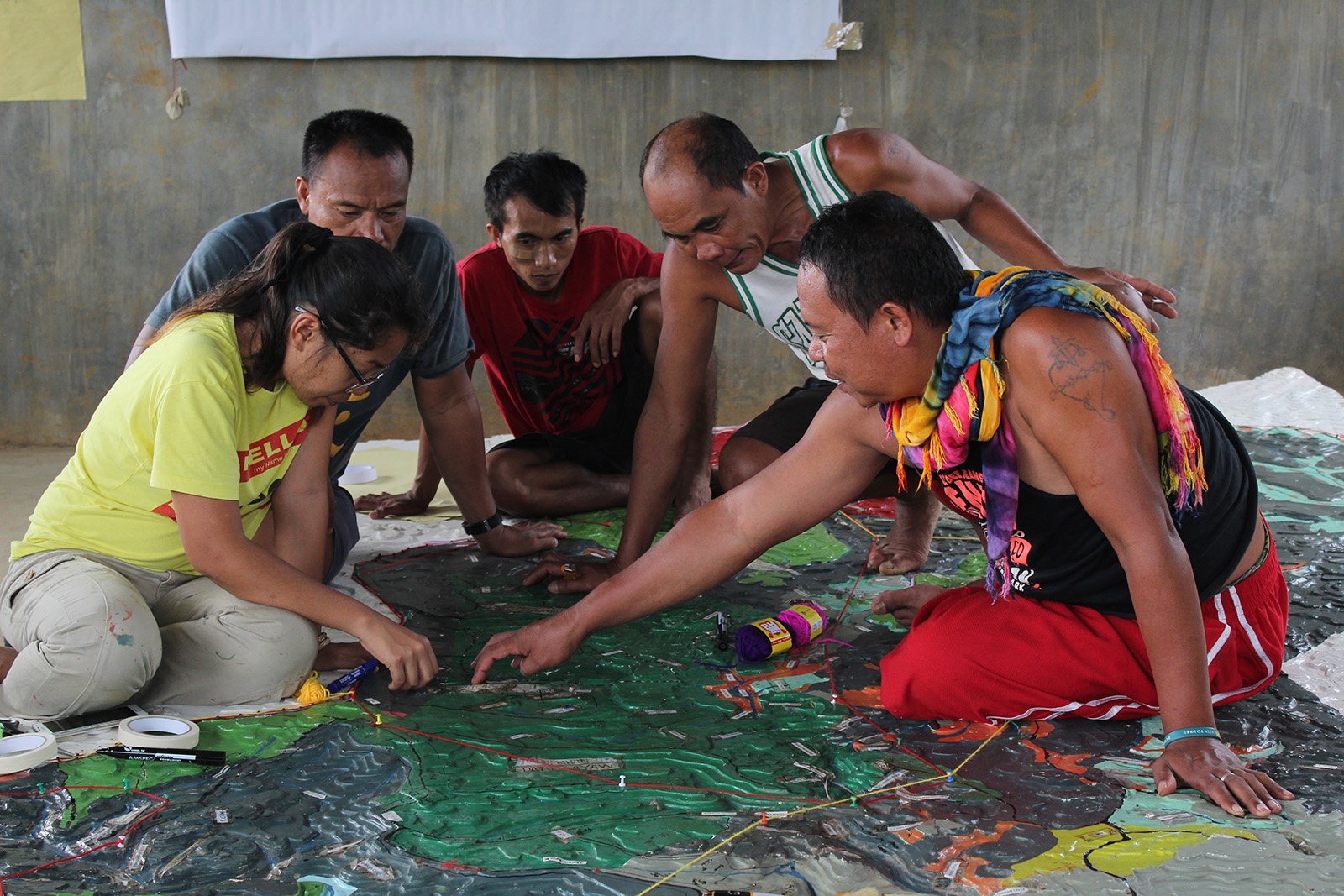
The Manobos of Bislig, Surigao del Sur
“Ang yuta mao ang among kinabuhi. Mao kini ang tinubdan sa among kinabuhi sukad pa sa panahon sa among amahan ug iyang amahan ug mga apuhan. Mao kini ilang kabilin sa amoa aron magpadayon kaming mabuhi. Amo ni aron protektahan ug among responsibilidad ang itunol kini sa kaayuhan ug kalamboan. Naningkamot mi ug padayon sa pagpaningkamot…ngano ipanghatag man sa uban?”
“Our land is our life. It is the source of our life since time beyond our memory. The forest, rivers, and the animals within have been the source of our life since time beyond our memory. It has been what our fathers’, their fathers’, and forefather’s legacy. The Tinuy-an Falls saved us from slavery, the forest filled our stomachs, and the streams strengthened our spirits. Protecting the environment is not only our responsibility, but our life. For us to stay alive, we have to fight for it entirely. Why would we just give it to anyone?”

Located at the hills of the popularly known coastal province of Surigao del sur is the Manobo community of Sote where the majestic Tinuy-an Falls is found. This recently proclaimed protected landscape has been managed and protected by the community since time immemorial by sustainable conservation practices ingrained in their lifeways. (Photo: Bro. Jeffrey Pioquinto, SJ, WikiCommons)

With a population of roughly 1,500, the community is engaged in a mix of livelihood production systems including swidden farming, settled multi-crop and intercrop agriculture, hunting and gathering, livestock raising, fishing and production and trade in local handicrafts as souvenir items.
Most families cultivate rice, corn, legume, root crops, vegetables, fruits, and coconut, as well as abaca and pulp-wood trees. In conjunction with farming, some community members work as laborers, habal-habal drivers, and tourist guides.


The Manobo of Sote still follow sustainable farming, hunting, and fishing practices with traditional tools made from materials indigenous to their territory. Harvests and catch are primarily for subsistence only. Surpluses are usually shared or given to other community members who need it.

Pangasanan means _____ . It is 63% forested area, half of which is secondary forest which was part of the old PICOP area and areas used in swidden farming years ago. Pangasananan’s forest holds an estimate of 470,755.05 tonnes of Carbon with high floral species richness of 188 and uneven abundance and degrees of dominance of floral species.


The Pangasananan is part of the South Diwata/Bislig Key Biodiversity Area (KBA), Bislig Important Bird Area (IBA), and overlaps with the recently declared Tinuy-an Falls Protected Landscape. According to BirdLife International, the Bislig IBA hosts threatened and restricted-range bird species.

The Manobo Tribal Council of Sote (MATRICOSO) acts as a legal body tasked to manage business affairs and implementation of community development and conservation activities. They are the umbrella organization composed of the ancestral domain sectoral leaders, the council of elders, and headed by the Tribal Chieftain Hawudon Tinuy-an Alfredo Domogoy.

In conjunction, the community also established the LIT-AG Force, which is a special group of Ancestral guards composed of both Tribal Council leaders and either Manobo or long-time migrants in the ancestral domain who identify with the Manobos’ cause. Their main function is to defend the territory from illegal poachers, illegal loggers, and other entities in offense within their territory.

“Kaning atong kinaiyahan, protektahan nato kini. Kay kini mao ang atong daganan sa tanang panginahanglanon nato. Kung kita masakit, kung kita magutom, kinahanglan ug puluy-anan, sinina, ug mainom, kini magahatag kanato ug kinabuhi.”
“This world and environment we live in, we have to protect this. This is where we run to for all our needs. When we get sick, get hungry, need shelter, clothing, get thirsty, it will give us life.”
